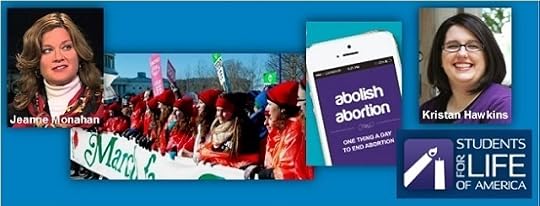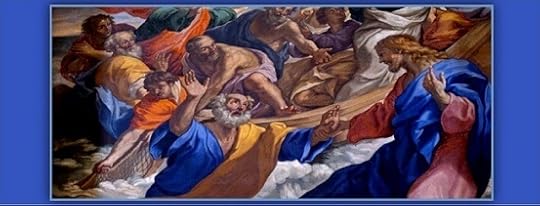Carl E. Olson's Blog, page 103
March 31, 2014
"How to Get Published" by Dorothy Cummings McLean
IPNovels.com
When I was a child, I was greatly inspired by Canadian author Gordon Korman who wrote his bestselling This Can’t Be Happening At Macdonald Hall when he was thirteen years old. I thought that I too would become an overnight child success, but I did not. Although I wrote story after story, I never had the courage to send them away anywhere, or to enter contests, or to ask if there were periodicals or contests for children’s stories. I assumed some trusted adult would eventually take it upon himself to introduce me to the literary world. I assumed wrongly.
Rule 1: Write. Write a lot.
Thus, it was not until I was 20 or so that I finally dared dip my toe in the wide Sargasso Sea of publication and sent two poems to the most intelligent of the University of Toronto student newspapers, The Gargoyle. They were accepted, and so before my dazzled eyes appeared in print my deathless verses beginning, if I recall correctly, “Ophelia didn’t jump/Hamlet pushed her.”
Rule 2: Send stories, poems, opinions, book reviews, etc., to those journals and magazines that welcome them. Publications belonging to your immediate community, like your college newspaper, are ideal.
After that, I took to the Spoken Word stage where, instead of reading poetry, I read comic short stories, often of dubious taste, suited to my raffish audience. And because I was surrounded by other writers, I finally got the courage to send my stories to short story magazines. They were all rejected.
Rule 3: Read your writing aloud to people who care about writing, and listen to them read their work aloud. This could be at “Open Mic” events, or in a Creative Writing club. Become known as a good writer but also, very importantly, as a good listener and supporter of others’ work.
I most liked being rejected by The Atlantic. I preserved their rejection letter, typed on exquisite paper, for years. I least liked being rejected by Blood & Aphorisms, for the then-editor sneered, “Have you even read Blood & Aphorisms?” I meekly replied, yes, it was my favourite fiction magazine.
Youth and Technology Revitalize the Pro-Life Movement
Youth and Technology Revitalize the Pro-Life Movement | Mary Beth Smith | Homiletic & Pastoral Review
Why are college campuses “ground zero” for pro-life activism? Because Gallup Poll statistics report that upon entering college, 47 percent of women were pro-life, but by graduation 73 percent said they were pro-choice.
The equation “40 = 50m.” was the theme of the 2013 March for Life. The numbers are significant as they represent the 40th anniversary of the Roe v. Wade decision, causing the loss of millions of lives due to abortion. Reflected in the numbers is the lack of respect for the life and dignity of the human person. My intention here is to look at the new momentum in the pro-life movement found in both the “March for Life” and “Students for Life of America” organizations through the lens of different generations, motivation factors, impact of technology, and messages of hope, interwoven with the themes of human dignity and intergenerational solidarity.
Since the landmark case of Roe v. Wade in 1973, pro-life groups have been active on college campuses. While many of the activists from those early days retain their pro-life position, they are now in their 50s, 60s, 70s, 80s, and 90s, part of an “aging” population. Due to work, family commitments, and age, most have limited their involvement in the pro-life movement to making donations to pro-life organizations, voting in favor of pro-life issues and for pro-life candidates, forming human chains to show respect for life, and occasionally participating in sidewalk awareness campaigns and prayer vigils. Involvement in these pro-life activities, regardless of age, reflects the characteristics of faithful
citizenship. 1
One exception to age slowing down a person in political activism against abortion was the founder of the March for Life, Nellie Gray, who died in August 2012, at the age of 88. A Washington Post article states that she organized the annual March for Life almost single-handedly from her home right up to her death. 2 Perhaps, Nellie’s legacy will be her “example of connections between generations, (as) a resource for the well-being of the family and the whole of society.” 3
Nellie’s successor is 40-year-old Jeanne Monahan, who resigned from the Department of Health and Human Services Council as head of the outreach on abortion and issues of “human dignity.”
March 29, 2014
"The blind man is the human race"
A Scriptural Reflection on the Readings for Sunday, March 30, 2014 | Fourth Sunday of Lent | Carl E. Olson
Readings:
• 1 Sam 16:1b, 6-7, 10-13a
• Psa 23:1-3a, 3b-4, 5, 6
• Eph 5:8-14
• Jn 9:1-41
Scripture refers many times to the contrast between darkness and light. The first mention of this division is in the opening chapter of Genesis, in which God speaks light into being. “God saw how good the light was. God then separated the light from the darkness” (Gen 1:3). Light, of course, is essential for the existence of living things, who rely upon it for everything from heat to energy to sight.
The opening of the Gospel of John intentionally echoes Genesis 1 in describing how the Word of God—Who created all things—came into the world in order to bring about a new creation. “What came to be through him was life,” the Apostle John wrote, “and this life was the light of the human race; the light shines in the darkness, and the darkness has not overcome it” (Jn 1:3b-5). The intertwining themes of life and light, death and darkness, set the stage for many of the narratives and discourses in the Fourth Gospel, including today’s Gospel reading, which is the story of the man born blind.
At the heart of this fascinating narrative is a simple but powerful contrast: the man who is blind from birth knows little, but upon encountering the healing Savior learns much. The Pharisees, who present themselves as knowing everything of importance, expose themselves as men who can be taught nothing, even though they speak directly to Jesus Christ, the Incarnate Word (cf. Jn 9:39). Part of the initial discussion is focused on the disciples’ question about who is to blame for the man’s blindness. Jesus’ response might seem flippant—indeed, would be flippant—if He weren’t God. But it also points out that the disciples, like the Pharisees, are more interested in assigning blame than in extending mercy and healing.
Saint Augustine, commenting on the spiritual sense or meaning of the man’s blindness, simply stated, “This blind man is the human race.” Although the man’s physical blindness was not due to his sin, all of mankind is stricken with spiritual blindness, passed on to us by our father Adam due to his prideful desire to find fulfillment apart from God. That act of rebellion resulted in man’s expulsion from the Garden, into the desert of a world deformed and darkened by sin. All of us, like the blind man, are unable to heal ourselves; desiring to see, we stumble about in darkness and misery.
Blindness in first-century Palestine meant being almost entirely cut off from the ordinary life of society. Analogously, spiritual blindness consists of being separated from the life and grace of God—that divine “society” of Father, Son, and Holy Spirit.
The key question for every man is simply this: Do you really want to see? The Evangelist, in depicting the various responses to Jesus’ word and actions, reveals the clear divisions created by Christ and that His words and deeds demand an honest response. Upon having spittle applied to eyes and being told to go wash in the pool of Siloam, the blind man obeys. But that is just the beginning of the miracle of sight, for he will soon recognize, through spiritual eyes, that the man called Jesus (Jn 9:11) is also a prophet (Jn. 9:17)—and not just any prophet, but one sent from God (Jn 9:33).
But the full splendor of spiritual light is shown forth when he says, “I do believe, Lord” and worships Jesus (Jn 9:38).
In talking to the Pharisees, the blind man used simple but unsettling logic: the man who healed him must be from God since only God can perform such a miracle. The Pharisees, in response, throw him out—most likely excommunicating him from the life of the Temple and synagogue. They would rather speak for Moses than listen to God; they preferred to slumber in sin than actually be saved. But those who desire to see and to live will heed the words of Saint Paul: “Awake, O sleeper, and arise from the dead, and Christ will give you light.”
(This "Opening the Word" column originally appeared in the March 2, 2008, issue of Our Sunday Visitor newspaper.)
March 28, 2014
Fr. Joseph Fessio, SJ, starts "anti-blog", www.AngelicPilgrim.com
Fr. Joseph Fessio, SJ, founder and editor of Ignatius Press, has started a blog.
However, he describes it as a kind of “anti-blog”, 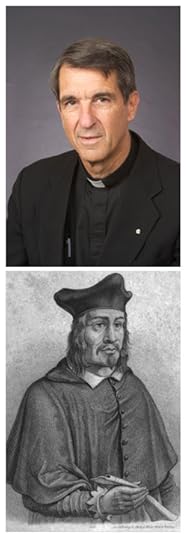 or even an “anti-Tweet” site. The blog is not about him, but about a 17th century priest-mystic-poet whom the great Catholic theologian and humanist Hans Urs von Balthasar has called “one of the greatest poets of the west”, ranking him with Homer, Virgil, Dante, and Shakespeare. His name was Johann Scheffler, but he went by the name of Angelus Silesius.
or even an “anti-Tweet” site. The blog is not about him, but about a 17th century priest-mystic-poet whom the great Catholic theologian and humanist Hans Urs von Balthasar has called “one of the greatest poets of the west”, ranking him with Homer, Virgil, Dante, and Shakespeare. His name was Johann Scheffler, but he went by the name of Angelus Silesius.
The blog is AngelicPilgrim.com, after Angelus Silesius’ great work “The Angelic Pilgrim”, and is solely focused on the nearly 1700 two-line poems composed by the German.
In the "About" section of the blog, Fr. Fessio explains the motivation for creating the site:
I have found these poems so rich, so deeply theological, and so inspiring, that I decided to create a blog as a kind of “anti-blog”, and even more as an “anti-Tweet” site. Cyberspace overflows with trivialities. And they are often “pushed” onto our smartphones or computers. (Often enough people seek this.) These poems take you into the depths and up to the heights. They are solid and nourishing. But they won’t come to you. You have to come to them.
I will post poems frequently. And when all the poems from Fr. von Balthasar’s little book have been posted, Ignatius Press will publish them together.
The beautiful, concise, German poetry cannot be reproduced in English without more losses than any possible gains. So I have posted the German original with a very literal English, word for word, translation. This translation is meant to help the reader read and understand the poems in German, enjoying the sonority, rhythm, and rhyme of the original.
Some of the words are archaic. And there are poetic contractions. But the German is quite simple. It is the content which is profound.
Fr. Fessio also provides a sound clip for each poem, writing that he makes "no pretense of having a perfect German accent. But you will be able to experience the poetry of the original German."
The blog also contains an "Epilogue" by von Balthasar, who wrote of Angelus Silesius:
This selection from Scheffler’s almost 1700 two-line poems is meant first of all as a gift and a help for prayerful reflection and contemplation. Certainly Scheffler is in this work one of the greatest poets of the West; but he writes poetry because he loves God and is enthralled and enraptured by God. Thinking about God and the divine takes him out of himself. God is for him the eternally new wonder. Every grain of divine truth blossoms for him and becomes a tree that reaches to heaven and grows into a magic garden in whose beauty he wanders like a child in a fairy tale.
He is not a melancholic but a troubadour consumed by love. This love is the spark that ignites his art that is all the more amazing in that it doesn’t portray the song of the heart in its endless outpouring, but only again and again in sudden flashes. The beloved truth overwhelms anew as if for the first time. The heart stops and is exposed to love that is stronger than death.
Visit AngelicPilgrim.com to learn more about Angelus Silesius and to read his poems.
"'Noah': A Theological Reflection" by Steven D. Greydanus

Russell Crowe stars in "Noah", the just released film from writer and director Darren Aronofsky (CNS photo)
Noah: A Theological Reflection | Steven D. Greydanus | CWR
Darren Aronofsky’s controversial film is sometimes divisive and divided, but is also deeply serious about essential questions
Neil deGrasse Tyson—the prominent astrophysicist and science popularizer whose reboot of Cosmos is currently airing on Fox and the National Geographic Channel—was asked a few years ago “which books should be read by every single intelligent person on the planet.” Tyson’s #1 pick, the Bible, would have been unremarkable if not for his flippant parenthetical rationale for this choice: “to learn that it’s easier to be told by others what to think and believe than it is to think for yourself.”
Reading those words (tossed off, to be fair, in a comment on Reddit), I wonder how many nonreligious scholars of the humanities have winced at Tyson’s parched, polemical assessment of the value of reading the Bible. As basic cultural familiarity with the most elementary aspects of the Bible’s contents dwindles in our post-Christian culture, a complacent dismissiveness toward the Bible as an antiquated compilation of benighted Bronze Age myth and superstition unworthy of any educated person’s time (except perhaps to understand the opposition) becomes ever more viable.
Taking Scripture Seriously
Some might argue that Darren Aronofsky’s Noah, with its wild elaborations upon the text of Genesis, can only further contribute to biblical illiteracy. Yet for all its dramatic and cinematic liberties, Noah is profoundly engaged with its source material. Noah takes Genesis seriously as a text worth reading carefully and thinking about deeply in its own right.
Raised culturally Jewish, Aronofsky is an atheist, but has long been fascinated by the story of Noah (since writing a contest-winning poem about the dove and the ark in 7th grade, and reading it aloud at the United Nations). Development on the film dates back over 15 years. (With co-writer Ari Handel, Aronofsky has also scripted a graphic novel about Noah based on an early screenplay for the film.)
Noah is the work of a filmmaker deeply familiar with the story of the great flood, not only in its canonical form in Genesis, but also in other ancient Jewish texts, from the books of Enoch and Jubilees to rabbinic commentaries and midrashic retellings. In some ways it reflects the influence of our secular age; in offer ways it a bracing challenge to it. It is a divisive film and a divided film, one that seems almost to be arguing with itself, and about which those arguing on all sides may at turns have a point.
"Symbolon": Teaching for Conversion | An interview with Dr. Edward Sri
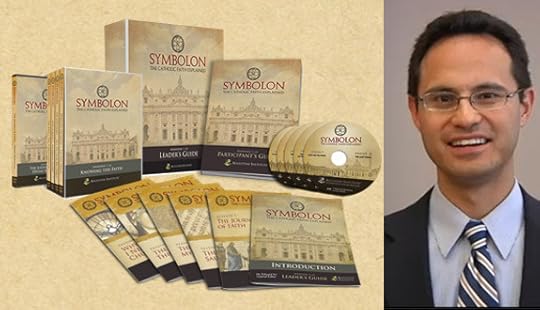
Dr. Edward Sri is the director of Symbolon, a new catechetical program produced by the Augustine Institute (Denver).
Symbolon:
Teaching for Conversion | CWR Staff | Catholic World Report
A new catechetical program from the Augustine Institute provides a comprehensive, orthodox, systematic presentation of the faith, while alos highlighting the beautiful, organic unity of the faith
Symbolon is a new catechetical program produced by the Augustine Institute of Denver, focused on providing a beautiful and systematic presentation of the Catholic Faith. It was filmed on locations in Rome, the Holy Land, Calcutta, and elsewhere, and features nationally-known teachers and scholars, including Edward Sri, Tim Gray, Curtis Martin, Mary Healy, Teresa Tomeo, and many others.
Dr. Edward Sri, Associate Professor of Sacred Scripture, Theology, and Catechetics
Chancellor at the Augustine Institute, is the director of the Symbolon program. He recently spoke with CWR about Symbolon, its focus and goals, its contents and approach, and how it works.
CWR: In a nutshell, what is Symbolon, and who is it for?
Dr. Edward Sri: Today, many people have a fragmented understanding of the Catholic faith. We might know there are 12 apostles, 10 commandments, 7 sacraments, and 3 persons of the Trinity. But we have almost zero understanding how it all fits together and what difference it makes for our lives.
We at the Augustine Institute wanted to build a program that walks through the entirety of the Catholic faith, so that people can know their faith, understand how to live practically, and be able to articulate it to others. Symbolon is that program. It’s a video series for adult faith formation that was filmed on location in Rome, the Holy Land and Calcutta and in the Augustine Institute studios in Denver. It features dozens of teachers who explain the Catholic faith simply and in an engaging, life-transforming way.
CWR: What was the genesis of Symbolon, and how did the program come about? Who are some of the folks involved in producing the program?
Continue reading on the CWR site.
March 27, 2014
The POTUS and the Pope: Leaders headed in very different directions
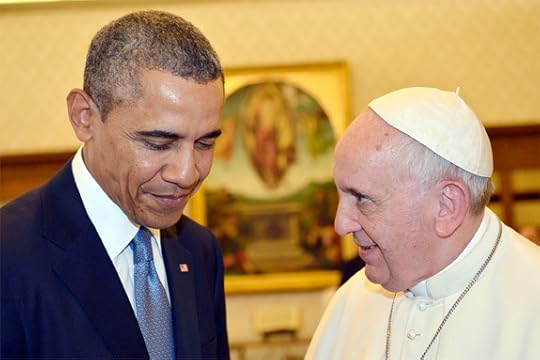
U.S. President Barack Obama and Pope Francis exchange gifts during a private audience at the Vatican March 27. (CNS photo/Gabriel Bouys, pool via EPA) (March 27, 2014)
by Carl E. Olson | CWR blog
Today's meeting between Francis and Obama accentuated differences as much or more than it did similarities
How quickly things change. It wasn't that many years ago that Barack Obama—as a candidate, and then as President of the U.S.—was lauded with praise and descriptives that, if applied to a pontiff, would have caused many to wonder, "Has the Church declared the Pope to be the Fourth Person of the Trinity?" In 2008—which in the Age of the Internet is roughly 259 years ago—the victorious Obama told an ecstatic crowd in St. Paul, Minnesota, "America, this is our moment. This is our time. Our time to turn the page on the policies of the past. Our time to bring new energy and new ideas to the challenges we face. Our time to offer a new direction for the country we love."
And then these rather famous lines:
The journey will be difficult. The road will be long. I face this challenge with profound humility, and knowledge of my own limitations. But I also face it with limitless faith in the capacity of the American people. Because if we are willing to work for it, and fight for it, and believe in it, then I am absolutely certain that generations from now, we will be able to look back and tell our children that this was the moment when we began to provide care for the sick and good jobs to the jobless; this was the moment when the rise of the oceans began to slow and our planet began to heal; this was the moment when we ended a war and secured our nation and restored our image as the last, best hope on Earth. This was the moment - this was the time - when we came together to remake this great nation so that it may always reflect our very best selves, and our highest ideals.
Those were the good 'ol days, before reality—in the form of daily governance and a dubious reworking of the nation's healthcare system—set in. There are many other factors, of course, all of which have led to a steady decline in the President's popularity, to the point that the Pope is, percentage-wise—twice as popular, as The Daily Caller notes:
Pope Francis currently enjoys an 85 percent approval rating among American Catholics and a 63 percent approval rating among all Americans, according to a new poll from the Saint Leo University Polling Institute.
Just 5 percent of American Catholics and 8 percent of all Americans have a negative view of Pope Francis’ job performance.
Meanwhile a new AP-GfK poll found that just 41 percent of Americans approve of Obama’s job performance, which is the second lowest point the poll has ever hit, according to the Washington Post. Some 59 percent of Americans disapprove of Obama, which is a percentage point greater than the previous high in December.
To be fair, Obama was elected by a generally fickle block of voters, and most Presidents suffer a steady decline in popularity, in part because the Age of Celebrity cannot long bear to be engaged, never mind married, to yesterday's savio—er, celebrit—uh, once-in-a-lifetime leader. (Remember when Justin Bieber and Tramp GaGa were the hottest items around?) The vigorous and often vicious 24/7 grind of news and commentary tends to eat up nearly anything of transitory character, including statements long on promise but short on clarity and, in many cases, sound principles.
The irony, in short, is that President Obama has been losing clout and stature, in part, because he is now drowning in the waters of instant celebrity and cult of personality that he once strode upon like a post-modern, post-political messiah.
Searching for Clarity in Vocational Discernment
Christ calling Peter to come to him
Searching for Clarity in Vocational Discernment | Fr. Bryce Sibley | HPR
The call of the Lord usually comes to us in a more subtle and indirect manner … left up to us, with the assistance of divine grace, to discern whether we are being called to the priesthood or consecrated life.
When a soldier receives his military assignment, it’s clearly spelled out—what his duties are, who his superiors will be, where he is to report. There is no mystery, and no need for guessing; every soldier is clear on his mission, and the commander’s intent. His safety, and the safety of others, demands such clarity. Although, in this life, we are engaged in spiritual warfare, and we call the Church on earth the “Church Militant,” believers cannot expect the same clarity when it comes to knowing if they are called to the priesthood or the consecrated life.
Many of the predominant figures in Sacred Scripture have been blessed with great clarity when discerning their vocation because God chose to speak to them in a direct and, often, very startling manner. The Lord spoke to Moses from the burning bush. The archangel Gabriel appeared to Mary and told her that she would be the Mother of the Messiah. St. Paul encountered the Risen Lord on the road to Damascus. These dramatic encounters changed the direction of their lives, leaving them with a concrete certainty of the Lord’s call.
However, for the majority of humanity, the divine prerogative has ordained that individual vocations normally be revealed less explicitly. Rarely does the Lord’s voice bellow from a thunderhead, or does Christ appear in his risen majesty to reveal his will to us. Instead, the call of the Lord usually comes to us in a more subtle and indirect manner. It is then left up to us, with the assistance of divine grace, to discern whether we are being called to the priesthood or consecrated life.
This can be especially frustrating for many people discerning a potential vocation because they seem to be searching for an absolute certainty that they are called before they are willing to follow or act upon it.
Why I’ll Be Seeing "Noah"

Why I’ll Be Seeing
Noah
|
Dr. Leroy Huizenga | CWR blog
My suspicion is that suspicious viewers will find the film stimulating, helping them see fascinating facets of the story they’ve not seen before
My wife and I were avid moviegoers once, often heading out to dinner and a film twice a week. We seldom go anymore. Children are one reason, and another is the move from two incomes to one that came with them. The biggest reason, however, concerns the product: we feel Hollywood hasn’t made films worthy of the big screen for some time, movies that must be seen in the theater. If there is something worth seeing, it’s usually worth the wait for its rental release on Amazon Instant Video or iTunes. For something epic, we’d make the effort.
Noah promises to be epic, if the terrific trailers and reliable reviews are any indication. And thus it’s a pity many in the wider Christian world seem to be writing off Noah without having seen it while flocking to supposedly safe-and-sound movies made for the pious multitudes not worthy of regard as cinematic art.
Christian complaints about Noah are often fundamentalist in character, finding fault either with the director, and alleged atheist, Darren Aronofsky (there are differing claims about Aronofsky's actual beliefs) or with the supposed liberties taken with the text of Noah’s story as found in Genesis. I would maintain that Christians who know a bit about art and texts should consider seeing and supporting Noah, for what matters is the film itself, and (while I haven’t screened it yet) the film promises to be a creative, faithful, and stimulating exploration of the biblical story.
Artists matter for their art, but not necessarily as much as many might think.
March 26, 2014
New: "The Rising: A Novel" by Robert Ovies
Now available from Ignatius Press:
Carl E. Olson's Blog
- Carl E. Olson's profile
- 20 followers



